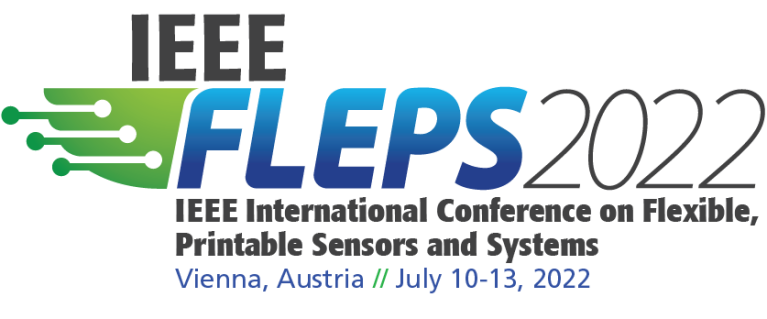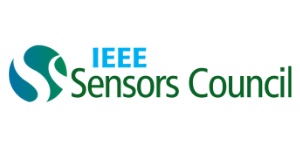FOCUSED SESSION 1: PRINTED BIOSENSORS FOR POINT-OF-CARE DIAGNOSTICS
Large-Area Interfaces for Single-Molecule Label-free Bioelectronic Detection
Bioelectronic transducing surfaces that are nanometric in size have been the main route to detect single molecules. Though enabling the study of rarer events, such methodologies are not suited to assay at concentrations below the nanomolar level. Bioelectronic field-effect-transistors with a wide (μm2–mm2) transducing interface are also assumed to be not suited, because the molecule to be detected
Screen-Printed Amperometric biosensors: a Balancing Act of Manufacturing properties, Cost Efficiency and Sensitivity
Amperometric sensors can be used for many applications, as they can be excellently manufactured in roll-to-roll printing processes. However, careful material selection is of particular importance for high sensitivity and selectivity. For example, the choice of reference electrode material is critical to ensure potential stability, and the working electrode material must be selected to match the r
FOCUSED SESSION 2: FLEXIBLE ELECTRONICS FOR ENERGY EFFICIENT BRAIN INSPIRED COMPUTING
A Thermodynamic Theory to Describe the Neuromorphic Properties of Organic Electrochemical Transistors
The increasing hunger for energy of software-based artificial intelligence demands the development of hardware-based, neuromorphic neural networks. A key element of future neuromorphic computing, in particular concerning applications in real-time biosignal classification, is the organic electrochemical transistor (OECT) that, by employing a mixed ion-electron conducting materials, can perform swit
Challenges and perspectives for energy-efficient brain-inspired edge computing applications
In recent years, Artificial Intelligence has shifted towards edge computing paradigm, where systems compute data in real-time on the edge of the network, close to the sensor that acquires them. The requirements of a system operating on the edge are very tight: power efficiency, low area footprint, fast response times, and online learning. Moreover, in order to fully optimize sensor performance and
FOCUSED SESSION 3: E-TEXTILE SENSOR SYSTEMS
Development of Edible Electronic Components Towards Edible Systems in Smart Pharmaceuticals and Direct Food Tagging
Enhanced biocompatibility and ease of processability of conjugated organic materials have spurred the work of the bioelectronics community towards the development of an increasing number of organic electronic biosensors and bioactuation devices. A further inspiring opportunity stems from the use of natural or bioinspired materials to develop edible electronic systems, composed of devices that can
FOCUSED SESSION 4: MICRO- AND NANO-SYSTEM TCAD
Sensor design and circuit implementation using a flexible hybrid organic process design kit
Printed and flexible electronics enable interesting novel applications in the fields of sensors and bioelectronics. To design complex circuitry and hybrid integrated systems, the sensor and the near sensor computing part is fabricated in printed electronics, which are complemented by silicon electronics to form an integrated hybrid system. I will show how we have developed a dedicated flexible hyb
Key considerations for obtaining high performance contact-controlled devices
Contact-controlled transistors have seen renewed interest in the past few years, owing to their properties suited to high gain, low-power and variability-resilient large area circuits. In contrast with conventional thin-film transistors, the design and optimisation of such devices focuses on obtaining reliable and consistent contact barriers, where channel length is replaced, as a design parameter
FOCUSED SESSION 5: PRINTED ELECTRONICS FOR AUTOMOTIVES
No results found.
FOCUSED SESSION 6: E-WASTE AND CLIMATE CHANGE
Circular Economy & Flexible, Printable Sensors & Systems
The concept of a circular economy seeks to eliminate waste and to circulate products and materials at their highest value for the longest time possible. While the advent of flexible systems presents many opportunities for the integration of electronics into novel applications, likewise it poses many challenges in how they can be deployed in a circular fashion. This talk will focus on the resource
Environmental Monitoring using Printed and Biodegradable Electronics
High spatial density monitoring of the environment is essential for improving the understanding and management of natural systems. This is of particular importance for soils, where sensing can enable optimization of agricultural inputs, reduction of energy use, increased carbon storage, and enhanced soil health. Print-based manufacturing of electronic systems enables the fabrication of large numb
FOCUSED SESSION 7: SENSORS COUNCIL'S YOUNG PROFESSIONS
Simulation Toolchain for Neuromorphic Oscillatory Neural Networks Based on Beyond-CMOS Vanadium Dioxide Devices
Neuromorphic circuit design inspired by the functions of the human brain has recently attracted huge interest, from basic scientific research to technological applications, as a route for overcoming the limitations of the traditional von Neumann computing paradigm. Neuromorphic systems are being developed using CMOS and beyond CMOS devices in the quest to embed more functionality and increase ener
Skin-Interfaced Wearable Biosensors
The rising research interest in personalized medicine promises to revolutionize traditional medical practices. This presents a tremendous opportunity for developing wearable devices toward predictive analytics and treatment. In this talk, I will introduce our efforts in developing fully-integrated skin-interfaced biosensors for non-invasive molecular analysis. Such wearable biosensors can continuo















